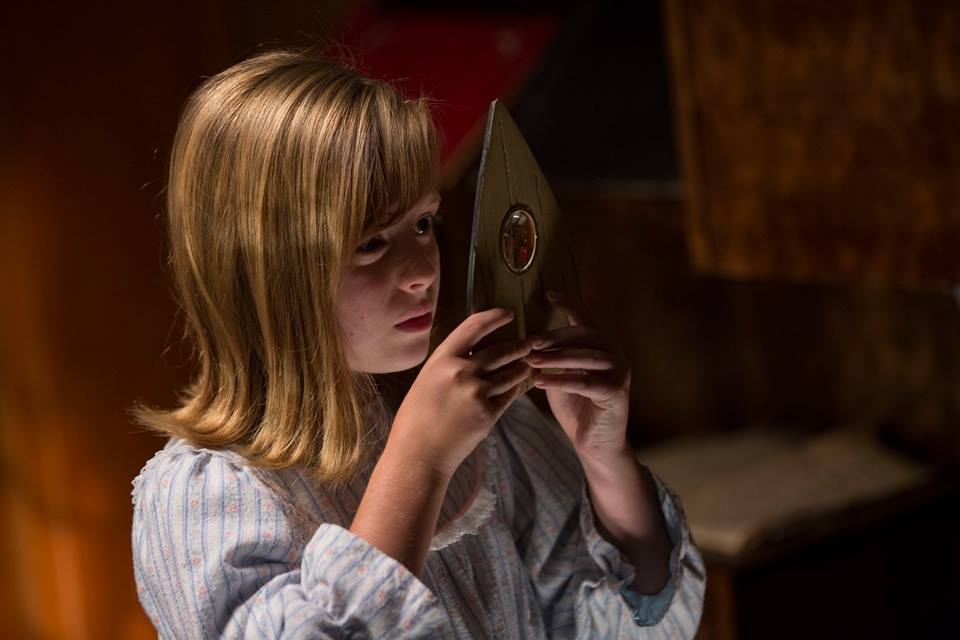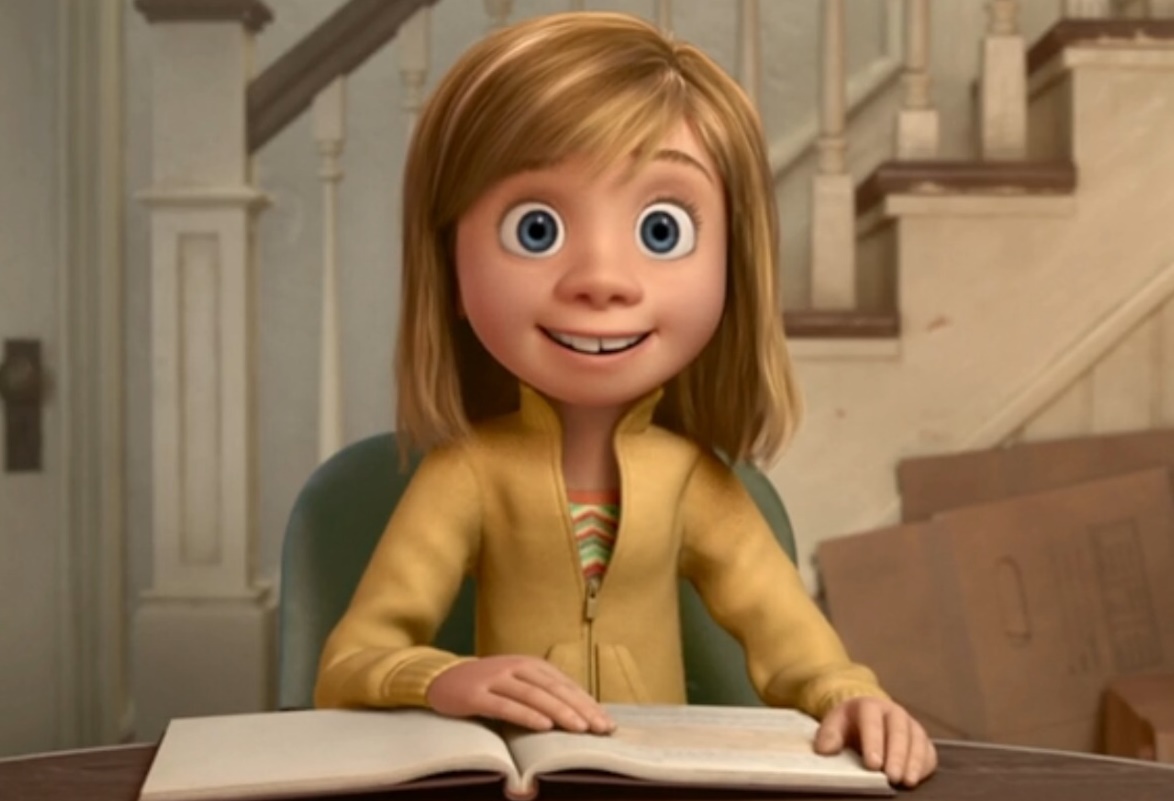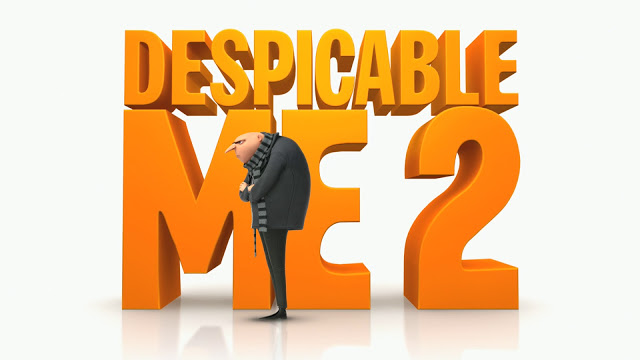This guest post written by Margaret Evans appears as part of our theme week on Women in Horror.
A common question that is asked of horror movies is why? Why don’t any of the leads think to go to the police? Why do they not stop messing around with dark forces before it is too late? Not only does Ouija: Origin of Evil have an answer to such questions, it answers them in a way that serves to make its cast more sympathetic.
Directed and co-written by Mike Flanagan, Ouija: Origin of Evil — the prequel to the 2014 film Ouija — stars Elizabeth Reaser as Alice Zander, a fake psychic who enlists her daughters in order to convince people that she can communicate with the dead. Since the death of Alice’s husband, this has become how she earns money. The film opens with Alice performing a séance with her daughters and a client. They are able to pull off the illusion, but Alice declines the customer’s money because she wants to save him from a possibly fraudulent business venture. Alice justifies lying to clients as she believes that she’s providing a service that meets their emotional needs. But her refusal here conveys that there are limits she won’t cross when it comes to dealing with her customers.
This scene serves three important functions. It establishes why the Zander family would choose to experiment with a Ouija board. Alice turns away her customer’s money, proving that she is invested in her job for more than monetary gain. Finally, it reinforces how easy it is for someone to believe that a medium can allow them to contact a deceased loved one, as many people yearn to reconnect with those they have lost.
By this point, the audience is familiar with the aspects of Alice’s character that will inform her actions for the rest of the film. She still mourns the loss of her husband. She honestly believes that her job helps people; she says as much while talking with Father Hogan (Henry Thomas), a priest at her daughters’ school. Alice is passionate about what she does and sees in herself as akin to a therapist. Because Alice is a widow, she’s in a similar position to the people who seek her help. This makes it easier for her to view her actions as helping others grieve, and not the actions of an emotional predator. She feels what they feel. Alice longs for the closure that she believes she gives others through her work.
When her younger daughter, Doris (Lulu Wilson) displays the ability to use a Ouija board for real and actually connect with spirits, it makes perfect sense that Alice jumps at the opportunity. In her eyes, she is finally able to do what she has been pretending to do all this time and make a real difference in the world. In doing so, Alice fails to see both the danger to Doris and other warning signs that suggest the spirits she speaks to aren’t who they claim to be.
When Doris first uses the Ouija board, it doesn’t appear to cause her any harm. During the course of the film, however, she displays signs that she is being possessed: she starts writing in Polish despite not speaking the language,she uses strange powers to fight back against two boys bullying her. Father Hogan notices that something is amiss, but Alice doesn’t. She is too focused on the great work she thinks her daughter is doing. Alice doesn’t even think to question the spirits beyond a basic test, as she is too wrapped up in what she thinks her daughter has to offer people. The fervor with which she encourages her daughter’s talents shines a light on Alice’s own grief. Through Doris’ gift, Alice has found a purpose for herself. She is still mourning her husband, and being able to heal the pain of others gives her something to strive for. It’s also possible that despite statements to the contrary, Alice felt guilt over lying to the people who sought her help. Now that she can genuinely contact the dead through her daughter, it would make sense for Alice to see this as a redemption of sorts — a way for her to make amends for her earlier lies.
Towards the end of the film, Alice’s older daughter, Paulina “Lina” (Annalise Basso), points out something rather alarming: the answers the ghosts have been giving are the same answers that Alice used to give clients when she pretended to commune with the dead. The ghosts have been manipulating Alice with her own con.
The film comes full circle, connecting back to the very first scene. Everything that was true of Alice’s customer in that scene is true of Alice at this point in the film. She desperately wants to believe that she is talking to the deceased, and whomever she is speaking to knows exactly what to say to get what they want from her. The difference is that these spirits don’t have Alice’s best interests in mind.
Ouija: Origin of Evil subverts the conventions of the horror genre with a sympathetic main character with a relatable motivation. The spirits tempt Alice with her heart’s desire and this keeps her invested in doing what they want, even when it becomes increasingly clear that something is wrong. Alice makes mistakes, ignoring Doris’ needs in favor of her own being chief among them. This is successfully portrayed as tragic because Alice is shown to be an otherwise good mother. She is involved in both her daughters’ lives, to the extent that she has multiple scenes with Father Hogan to discuss Doris’ well-being. When Lina brings her doubts to Alice, she is frustrated by her mother’s inability to really listen to what she is saying because she is used to her mother being more willing to listen. It was Lina who suggested incorporating the Ouija board into her mother’s act. That her mother followed this advice serves as evidence that Alice is usually willing to take Lina’s ideas. In the film’s first scene, the whole family works together to pull off the séance, showing that they normally function well together as a unit. Influenced by The Changeling (1980), Flanagan wanted to create a period piece exploring the dangers of grief within a family, as he views “family as the safest place in the world.”
Because the film takes the time to examine Alice’s motivation, these are truly mistakes and not plot holes. Instead of undermining the film, they serve to contribute to its depth of character. Ouija: Origin of Evil may be a prequel, but it is first and foremost a tragic character piece. One in which a previously strong family dynamic is torn apart when malicious forces use Alice’s grief to manipulate her.
Margaret Evans is a writer from Godalming, a small town in south England. She currently writes for Starburst Magazine and Ink Magazine.












